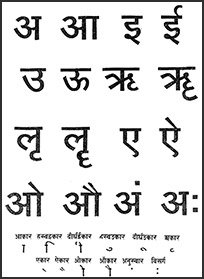Apaya, Apāya, Apayā, Āpayā: 26 definitions
Introduction:
Apaya means something in Buddhism, Pali, Hinduism, Sanskrit, Jainism, Prakrit, Marathi. If you want to know the exact meaning, history, etymology or English translation of this term then check out the descriptions on this page. Add your comment or reference to a book if you want to contribute to this summary article.
Images (photo gallery)
In Hinduism
Vyakarana (Sanskrit grammar)
Source: Wikisource: A dictionary of Sanskrit grammar1) Apāya (अपाय).—Point of departure, separation; cf. ध्रुवमपायेपादानम् (dhruvamapāyepādānam) P.I.4.24;
2) Apāya.—Disappearance; cf. संनियेगशिष्टानामन्यत-रापाये उभयोरप्यपायः । तद्यथा । देवदत्तयज्ञदत्ताभ्या-मिदं कर्म कर्तव्यम् । देवदत्तापाये यज्ञदत्तेपि न करोति (saṃniyegaśiṣṭānāmanyata-rāpāye ubhayorapyapāyaḥ | tadyathā | devadattayajñadattābhyā-midaṃ karma kartavyam | devadattāpāye yajñadattepi na karoti) M. Bh. on IV.1.36.

Vyakarana (व्याकरण, vyākaraṇa) refers to Sanskrit grammar and represents one of the six additional sciences (vedanga) to be studied along with the Vedas. Vyakarana concerns itself with the rules of Sanskrit grammar and linguistic analysis in order to establish the correct context of words and sentences.
Shaivism (Shaiva philosophy)
Source: Brill: Śaivism and the Tantric Traditions (philosophy)Apāya (अपाय) refers to “failure”, according to the Īśvarapratyabhijñāvivṛtivimarśinī 2.131.—Accordingly, “[This ascertainment] is successfully performed (nirapāya), i.e.,] it is devoid of the failure (apāya) [consisting in] the lack of a means of [valid] knowledge, and [it is devoid of] the possibility [that the means of valid knowledge] may be refuted”.

Shaiva (शैव, śaiva) or Shaivism (śaivism) represents a tradition of Hinduism worshiping Shiva as the supreme being. Closely related to Shaktism, Shaiva literature includes a range of scriptures, including Tantras, while the root of this tradition may be traced back to the ancient Vedas.
Kavya (poetry)
Source: Brill: Śaivism and the Tantric Traditions (kavya)Apāya (अपाय) refers to “death”, according to Kālidāsa’s Raghuvaṃśa verse 8.84.—Accordingly: “So do not think about her death (apāya-cintā). Those who have been born will surely die. Have regard for this Earth, for the Earth is the true wife of kings”.

Kavya (काव्य, kavya) refers to Sanskrit poetry, a popular ancient Indian tradition of literature. There have been many Sanskrit poets over the ages, hailing from ancient India and beyond. This topic includes mahakavya, or ‘epic poetry’ and natya, or ‘dramatic poetry’.
Yoga (school of philosophy)
Source: ORA: Amanaska (king of all yogas): A Critical Edition and Annotated Translation by Jason Birch1) Apāya (अपाय) refers to “that which is perishable” (as opposed to Acala—“imperishable”), according to the Amanaska Yoga treatise which deals absorption, yogic powers and liberation.—The Amanaska referred to (or qualified) Samādhi with several terms, which are all negative; [e.g., it is imperishable (nirapāya);] [...] The fact that such terminology is found in the Amanaska indicates that descriptions of Śiva and the void-like meditative states in Mantramargic Śaivism, were the basis of the descriptions of Samādhi and Paratattva (the highest reality) in this treatise. The Amanaska Yoga was consistent with the Pātañjala Yogaśāstra’s definition of Yoga, yet it described Samādhi in terms different to those of Pātañjalayoga; such as Nirapāya—“that which is imperishable”.
2) Apāya (अपाय) refers to the “going (of the Ages)”, according to the Mokṣopāya.—Accordingly: “[He is] known as Bhuśuṇḍa [because] his long life is known throughout the world. He is strong-minded because he has seen the coming and going (apāya) of the Ages [of the world], and he is exhausted counting the successions of cycles in each cosmic period”.

Yoga is originally considered a branch of Hindu philosophy (astika), but both ancient and modern Yoga combine the physical, mental and spiritual. Yoga teaches various physical techniques also known as āsanas (postures), used for various purposes (eg., meditation, contemplation, relaxation).
General definition (in Hinduism)
Source: Red Zambala: On the Salvific Activities of GodApāyas are detrimental criminal activities such as violence, aggression, theft etc.
In Buddhism
Theravada (major branch of Buddhism)
Source: Dhamma Dana: Pali English GlossaryT (Devoid of happiness). Group of the inferior worlds. The apayas do comprise four worlds:
- The asuras.
- The animals.
- The petas.
- The evils.
The existence of these worlds is prevailingly dominated by some emotions such as aversion, hatred and anger
Source: Pali Kanon: Manual of Buddhist Terms and DoctrinesThe 4 'lower worlds'. are:
-
the animal world,
-
ghost world,
-
demon-world,
-
hell.
See Vis.M. XIII, 92f.
Theravāda is a major branch of Buddhism having the the Pali canon (tipitaka) as their canonical literature, which includes the vinaya-pitaka (monastic rules), the sutta-pitaka (Buddhist sermons) and the abhidhamma-pitaka (philosophy and psychology).
In Jainism
General definition (in Jainism)
Source: archive.org: TrisastisalakapurusacaritraApāya (अपाय) refers to “difficulties” and represents one of the four divisions of Dharmadhyāna (“meditation on the destruction of karma”), according to chapter 2.2 [ajitanātha-caritra] of Hemacandra’s 11th century Triṣaṣṭiśalākāpuruṣacaritra: an ancient Sanskrit epic poem narrating the history and legends of sixty-three illustrious persons in Jainism.
Accordingly:—“The destruction of karma is from good meditation, and that meditation is four-fold: on ājñā, apāya, vipāka, and saṃsthāna. [...] There are difficulties (apāya) by the thousand of those by whom the path of the Jinas is untouched, to whom the Supreme Lord is unknown, and by whom the future is unconsidered. What impure acts have not been committed by the soul subjected to the intense darkness of deceit and delusion? Or what calamity has not been experienced? [...] That is regarded as ‘apāyavicaya-meditation’ in which one reflects thus on calamities arising from love, hate, and delusion”.
Source: The University of Sydney: A study of the Twelve Reflections1) Apāya (अपाय) (Prakrit: Avāya) also refers to “(reflection on) misfortune” and represents one of the four types of “pure meditation” (śukladhyāna), a classification of the “meditation” (Dhyāna), according to the Sthānāṅga Sūtra chapter 4.1.—The classification of meditation in the Sthānāṅga Sūtra comprises four kinds [e.g. “pure” (sukka/śukla)]. [...] The four reflections that are prescribed for pure meditation (sukkajhāṇa), [e.g., reflection on misfortune (avāya-aṇuppehā/apāya-anuprekṣā), ...].—Cf Aupapātika Sūtra and Bhagavatī (Bhagavaī), also known as the Vyākhyāprajñapti (Viyāhapannatti).
2) Apāya (अपाय) refers to “suffering”, according to the 11th century Jñānārṇava, a treatise on Jain Yoga in roughly 2200 Sanskrit verses composed by Śubhacandra.—Accordingly, “Virtuous meditation is of four kinds, examination of the instruction [of the Jina], [examination of] suffering (apāya), [examination of] the results of karma and [examination of] the form [of the universe] individually in that order”.
3) Apāya (अपाय) refers to the “destruction (done by Yama)”, according to the Jñānārṇava.—Accordingly, “[com.—Next he speaks about the destruction done by Yama (kālakṛtāpāyam) even of great heroes (mahāvīrāṇām)]—This world totters to the limit of the world of Brahmā with the fear of the beginning of a frown, and mountains immediately fall asunder by force of [the fact that] the earth is overcome by the weight of the heavy feet, of those heroes who are all led to death by the king of time in [the space of] some days. Nevertheless, desire is intense only in a living being who is bereft of sense”.

Jainism is an Indian religion of Dharma whose doctrine revolves around harmlessness (ahimsa) towards every living being. The two major branches (Digambara and Svetambara) of Jainism stimulate self-control (or, shramana, ‘self-reliance’) and spiritual development through a path of peace for the soul to progess to the ultimate goal.
Languages of India and abroad
Pali-English dictionary
Source: BuddhaSasana: Concise Pali-English Dictionaryapāya : (m.) the hell; state of loss and woe; lapse; loss.
Source: Sutta: The Pali Text Society's Pali-English DictionaryApāya, (Sk. apāya, fr. apa + i, cp. apeti) “going away” viz. — 1. separation, loss Dh.211 (piya° = viyoga DhA.III, 276). — 2. loss (of property) D.III, 181, 182; A.II, 166; IV, 283; J.III, 387 (atth°). — 3. leakage, out flow (of water) D.I, 74; A.II, 166; IV, 287. — 4. lapse, falling away (in conduct) D.I, 100. — 5. a transient state of loss and woe after death. Four such states are specified purgatory (niraya), rebirth as an animal, or as a ghost, or as a Titan (Asura). Analogous expressions are vinipāta & duggati. All combined at D.I, 82; III, 111; A.I, 55; It.12, 73; Nd2 under kāya; & frequent elsewhere. — apāyaduggativinipāta as attr. of saṃsāra S.II, 92, 232; IV, 158, 313; V, 342; opp. to khīṇâpāya-duggati-vinipāta of an Arahant A.IV, 405; V, 182 sq. — See also foll. pass.: M.III, 25 (anapāya); Sn.231; Th.2, 63; J.IV, 299; Pug.51; VvA.118 (opp. sugati); PvA.103; Sdhp.43, 75 & cp. niraya, duggati, vinipāta.

Pali is the language of the Tipiṭaka, which is the sacred canon of Theravāda Buddhism and contains much of the Buddha’s speech. Closeley related to Sanskrit, both languages are used interchangeably between religions.
Marathi-English dictionary
Source: DDSA: The Molesworth Marathi and English Dictionaryapāya (अपाय).—m (S) Evil, ill, mischief, calamity. 2 Loss, detriment, damage.
Source: DDSA: The Aryabhusan school dictionary, Marathi-Englishapāya (अपाय).—m Harm, injury, loss, destruction. Evil, ill, mischief (opp. upāya).
Marathi is an Indo-European language having over 70 million native speakers people in (predominantly) Maharashtra India. Marathi, like many other Indo-Aryan languages, evolved from early forms of Prakrit, which itself is a subset of Sanskrit, one of the most ancient languages of the world.
Sanskrit dictionary
Source: DDSA: The practical Sanskrit-English dictionaryApayā (अपया).—2 P. To depart, go away, retire, withdraw, fall off or away, disappear; अपयातमेव हि विमानमण्डलैः (apayātameva hi vimānamaṇḍalaiḥ) Uttararāmacarita 6.4; शोको दिनेषु गच्छत्सु वर्धतामपयाति किम् (śoko dineṣu gacchatsu vardhatāmapayāti kim) H.4.82.
--- OR ---
Apāya (अपाय).—See under अपे (ape).
See also (synonyms): apāyin.
--- OR ---
Apāya (अपाय).—[i-ac]
1) Going away, departure.
2) Separation; ध्रुवमपायेऽपादानम् (dhruvamapāye'pādānam) P.I.4.24. (apāyo viśleṣaḥ Sk.); येन जातं प्रियापाये कद्वदं हंसकोकिलम् (yena jātaṃ priyāpāye kadvadaṃ haṃsakokilam) Bhaṭṭikāvya 6.75.
3) Disappearance, vanishing, absence; सूर्यापाये (sūryāpāye) Meghadūta 82 at the time of sunset; क्षणदापायशशाङ्कदर्शनः (kṣaṇadāpāyaśaśāṅkadarśanaḥ) R.8.74 close of night; जलापाय- विपाण्डुराणि (jalāpāya- vipāṇḍurāṇi) Śiśupālavadha 4.5;4.54;18.1.
4) Destruction, loss, death, annihilation; करणापायविभिन्नवर्णया (karaṇāpāyavibhinnavarṇayā) R.8.42 loss, 83; मालत्यपायमधिगम्य (mālatyapāyamadhigamya) Mālatīmādhava (Bombay) 1.9 death or disappearance of M.
5) An evil, ill, misfortune, risk, calamity, danger (oft. opp. upāya); तदपि मरणापायचकितः (tadapi maraṇāpāyacakitaḥ) Bhartṛhari 3.9; तदनेन पापबुद्धिनोपायश्चिन्तितो नापायः (tadanena pāpabuddhinopāyaścintito nāpāyaḥ) Pañcatantra (Bombay) 1 not the danger (resulting from the plan); उपायं चिन्तयेत्प्राज्ञस्तथापायं च चिन्तयेत् (upāyaṃ cintayetprājñastathāpāyaṃ ca cintayet) Pañcatantra (Bombay) 1.46; अपायसंदर्शनजां विपत्तिमुपायसंदर्शनजां च सिद्धिप् (apāyasaṃdarśanajāṃ vipattimupāyasaṃdarśanajāṃ ca siddhip) 1.61; बह्वपाये वने (bahvapāye vane) Pañcatantra (Bombay) 1 exposed to many dangers, dangerous; कायः संनिहितापायः (kāyaḥ saṃnihitāpāyaḥ) H.4.65 exposed to dangers or calamities; सत्येऽप्यपायमपेक्षते (satye'pyapāyamapekṣate) H.4.12; Kirātārjunīya 14.19.
6) Loss, detriment, injury.
7) The end (of a word).
Derivable forms: apāyaḥ (अपायः).
--- OR ---
Āpayā (आपया).—[āpena jalapūreṇa yāti yā-ka] Name of a river near the Sarasvatī; दृषद्वत्या मानुष आपयायां सरस्वत्यां रेवदग्ने दिदीहि (dṛṣadvatyā mānuṣa āpayāyāṃ sarasvatyāṃ revadagne didīhi) Ṛgveda 3.23.4.
Source: Cologne Digital Sanskrit Dictionaries: Edgerton Buddhist Hybrid Sanskrit DictionaryApāya (अपाय).—(= Pali id., also Sanskrit but not in this technical application), evil state, = durgati, q.v. There are three such (see s.v. gati): in hells, as animals, as ghosts. In Pali this group of three is rare; usually there are four, life as asuras being added: Lalitavistara 32.12 try-apāya; 89.14 muktāś ca te tribhyo 'pāyebhyo; 92.15 (verse) triṣu apāyi (= °ye!); 196.8 trīṇy apy apāyāḥ; 300.21 (verse) apāya trayo (acc. pl.); 357.4 (verse) trīṇi śāntā apāyāḥ; Mahāvastu i.61.4 apāya-pratipūraka, filling (= crowding into) the (3) evil states of existence; ii.215.10 apāyeṣu apāyaṃ gamiṣyati, he will go to an evil existence in the (3) evil states; apāya- patha, ibid., Lalitavistara 46.7; 117.9; °bhūmi, virtually = hell, more specifically (so also apāya in Pali), Suvarṇabhāsottamasūtra 23.11 (verse) ye sattva tiṣṭhanti apāyabhūmau, ādīptasaṃprajvalitāg- nigātrāḥ; Lalitavistara 178.7 (and 9, read with Tibetan ṅan soṅ gsum, tri-apāya-, or tri-r-a°, for nirayāya).
--- OR ---
Āpāya (आपाय).—(?) , adj. = āpāyika (apāya with suffix -a), in Śikṣāsamuccaya 46.6 paścaināṃś codayiṣyāmo bhūtam āpāya-gocarān, and afterwards we will incite them who are veritably in a sphere-of-existence characterized by evil fate. So if text be kept; note states that Tibetan (sdig med) points to apāpa-, and Bendall and Rouse p. 47 translate with this, so that they may…be beyond the sphere of sin.
Source: Cologne Digital Sanskrit Dictionaries: Shabda-Sagara Sanskrit-English DictionaryApāya (अपाय).—m.
(-yaḥ) 1. Destruction, annihilation. 2. Separation, disnnion. 3. Loss, injury. 4. Departure, going away. 5. Retreat, flight. E. apa away, aya going.
Source: Cologne Digital Sanskrit Dictionaries: Benfey Sanskrit-English DictionaryApāya (अपाय).—i. e. apa-i + a, m. 1. Going away. 2. Disappearance. 3. Diminution, [Mānavadharmaśāstra] 1, 70. 4. End, [Rājataraṅgiṇī] 5, 98. 5. Trespass, injury. 6. Loss. 7. Danger. 8. Calamity.
Source: Cologne Digital Sanskrit Dictionaries: Cappeller Sanskrit-English DictionaryApāya (अपाय).—[masculine] departure ([adjective] yin); going astray or missing the aim, i.e. disadvantage, danger, diminution, loss; end, death.
--- OR ---
Apayā (अपया).—go away, depart, retreat, flee, cease, desist.
Apayā is a Sanskrit compound consisting of the terms apa and yā (या).
Source: Cologne Digital Sanskrit Dictionaries: Monier-Williams Sanskrit-English Dictionary1) Apayā (अपया):—[=apa-√yā] to go away, depart, retire from ([ablative]).;
—to fall off:—[Causal] -yāpayati, to carry away by violence, [Bhāgavata-purāṇa]
2) Apāya (अपाय):—a See ape.
3) [from ape] b m. going away, departure
4) [v.s. ...] destruction, death, annihilation
5) [v.s. ...] injury, loss
6) [v.s. ...] misfortune, evil, calamity.
7) Āpayā (आपया):—f. ([from] 3. āpa and √yā; cf. āpagā), a river, [cf. Lexicographers, esp. such as amarasiṃha, halāyudha, hemacandra, etc.]
8) Name of a river, [Ṛg-veda iii, 23, 4.]
Source: Cologne Digital Sanskrit Dictionaries: Goldstücker Sanskrit-English DictionaryApāya (अपाय):—[tatpurusha compound] m.
(-yaḥ) 1) Going away, passing away; e. g. in the Mīm. Sūtra: anapāyaśca kālasya lakṣaṇaṃ hi puroḍāśe; or in the Sāṅkhya S. pūrvāpāya uttarāyogāt (comm. pūrvasya kāraṇasyāpāyakāla uttarasya kāryasyotpattyanaucityāt); comp. also the instance which follows meaning 3.
2) Separation, disunion; e. g. in the Bhaṭṭik. sarvatra dayitādhīnaṃ suvyaktaṃ rāmaṇīyakam . yena jātaṃ priyāpāye kadvadaṃ haṃsakokilam; comp. also the following instance.
3) Absence, disappearance; e. g. in the Nalodaya: tadvāsaḥ svāpāyāṃ nītiriyaṃ ceti vipadi sasvāpāyām . nijavāsaḥsvāpāyānnikṛtya tāmamuñcadiha sasvāpāyām ‘(Nalus) thinking he acted rightly in his misery, abandoned her there (in the forest) when she was asleep, deprived of her own [instance to meaning 2.], her (good luck) having departed from her [instance to meaning 1.], after having torn (her garment) in the absence of garment or property of his own (comm.: nijaṃ svakīyaṃ yadvāsaḥ svaṃ ca dhanaṃ tadapāyāt tadapagamāt); or saṃniyogaśiṣṭānāmanyatarāpāya ubhayorapyapāyaḥ (in which Paribh. to Pāṇ. Vi. 4. 153. the E. I. H. Ms. No. 326. of the Mahābhāṣya reads however both times abhāva instead of apāya); or Mahābhāṣya (introd.): apāyo lopaḥ . ghnanti ghnantu aghnan . varṇāpāyo nārthāpāyaḥ.
4) Loss; e. g. in the Hitop. yatrāpāyaḥ saṃbhavati tatropāyopyasti.
5) Destruction, cessation; e. g. in the Nyāya S. duḥkhajanmapravṛttidoṣamithyājñānānāmuttarottarāpāye tadanantarāpāyādapavargaḥ.
6) Death; e. g. in the Bhaṭṭik. bandhūnaśaṅkiṣṭa samākulatvādāseduṣaḥ snehavaśādapāyam.
7) Misfortune, calamity, evil; e. g. in the Nalod. atha tuṅgopāyasya śravaṇena nalasya sānugopāyasya…svamano bhīmaściraṃ jugopa; (comm. nalasya apāyasyāpakramaṇasya duḥkhasya vā śravaṇena). E. i (iṇ) with apa, kṛt aff. ac.
Source: Cologne Digital Sanskrit Dictionaries: Yates Sanskrit-English DictionaryApāya (अपाय):—[apā+ya] (yaḥ) 1. m. Destruction; separation; loss; retreat, flight.
Source: DDSA: Paia-sadda-mahannavo; a comprehensive Prakrit Hindi dictionary (S)Apāya (अपाय) in the Sanskrit language is related to the Prakrit word: Avāya.
[Sanskrit to German]
Sanskrit, also spelled संस्कृतम् (saṃskṛtam), is an ancient language of India commonly seen as the grandmother of the Indo-European language family (even English!). Closely allied with Prakrit and Pali, Sanskrit is more exhaustive in both grammar and terms and has the most extensive collection of literature in the world, greatly surpassing its sister-languages Greek and Latin.
Prakrit-English dictionary
Source: DDSA: Paia-sadda-mahannavo; a comprehensive Prakrit Hindi dictionary1) Apaya (अपय) in the Prakrit language is related to the Sanskrit word: Apada.
2) Apaya (अपय) also relates to the Sanskrit word: Apraja.
Prakrit is an ancient language closely associated with both Pali and Sanskrit. Jain literature is often composed in this language or sub-dialects, such as the Agamas and their commentaries which are written in Ardhamagadhi and Maharashtri Prakrit. The earliest extant texts can be dated to as early as the 4th century BCE although core portions might be older.
Kannada-English dictionary
Source: Alar: Kannada-English corpusApāya (ಅಪಾಯ):—
1) [noun] liability to injury, damage, loss or pain; peril; danger.
2) [noun] a going away; departure.
3) [noun] separation.
4) [noun] ಅಪಾಯದ ಗಂಟೆ [apayada gamte] apāyada ghaṇṭe (fig.) an event that warns someone that they need to deal with an urgent or dangerous problem.
Kannada is a Dravidian language (as opposed to the Indo-European language family) mainly spoken in the southwestern region of India.
See also (Relevant definitions)
Starts with (+36): Apaya-kulacekaran, Apaya-varatakai, Apayabhumi, Apayacinta, Apayagami, Apayagamin, Apayahastam, Apayaj, Apayajaha, Apayaka, Apayakara, Apayakaraka, Apayakari, Apayakkal, Apayakkoti, Apayalai, Apayamana, Apayamitu, Apayamukha, Apayana.
Ends with (+64): Agamapaya, Amshapaya, Anapaya, Apapaya, Asamapaya, Atapapaya, Atapaya, Atatapaya, Autapaya, Avyapaya, Bahvapaya, Bahyapaya, Bapaya, Bhunjapaya, Budatapaya, Capaya, Carapaya, Carica papaya, Chidrapaya, Common papaya.
Full-text (+76): Nirapaya, Anapaya, Apayin, Apayana, Asura, Agamapayin, Pratyapaya, Ekapaya, Apayika, Vyapaya, Bahvapaya, Sapaya, Apayas, Avaya, Apayata, Apayanya, Apayatavyanaya, Apraja, Lower Worlds, Anapayadrishta.
Relevant text
Search found 36 books and stories containing Apaya, Apāya, Apayā, Āpayā, Āpāya, Apa-ya, Apa-yā; (plurals include: Apayas, Apāyas, Apayās, Āpayās, Āpāyas, yas, yās). You can also click to the full overview containing English textual excerpts. Below are direct links for the most relevant articles:
Vakyapadiya of Bhartrihari (by K. A. Subramania Iyer)
Verse 3.7.143 < [Book 3 - Pada-kāṇḍa (7): Sādhana-samuddeśa (On the Means)]
Verse 3.7.137 < [Book 3 - Pada-kāṇḍa (7): Sādhana-samuddeśa (On the Means)]
Verse 3.7.141-142 < [Book 3 - Pada-kāṇḍa (7): Sādhana-samuddeśa (On the Means)]
Trishashti Shalaka Purusha Caritra (by Helen M. Johnson)
Part 9: Sermon on the āsravas < [Chapter VII - Suvidhināthacaritra]
Part 15: Sermon on dharmadhyāna < [Chapter III - The initiation and omniscience of Ajita]
Rig Veda (translation and commentary) (by H. H. Wilson)
Abhidhamma in Daily Life (by Ashin Janakabhivamsa) (by Ashin Janakabhivamsa)
Factor 4 - Uddhacca (distraction, restlessness, wavering) < [Chapter 2 - On akusala cetasikas (unwholesome mental factors)]
Factor 5 - Alobha (non-greed) < [Chapter 3 - On kusala cetasikas (wholesome mental factors)]
Part 4 - Food For Thought < [Chapter 11 - Planes Of Existence]
Tattvartha Sutra (with commentary) (by Vijay K. Jain)
Verse 7.9 - Contemplations with regard to the opposites < [Chapter 7 - The Five Vows]
Yoga Vasistha [English], Volume 1-4 (by Vihari-Lala Mitra)
Chapter VI - The different stages of yoga < [The yoga philosophy]

